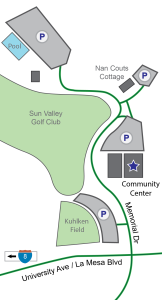May 2017
Honoring Yesterday – Protecting Tomorrow
Vol. 48, No. 5
What’s Inside
- President’s Message
- Recent Events
- COLAs & Consumer Price Indices
- RESDC Board Opening
- RESDC Board Secretary
- Unique Neighborhoods of San Diego
- Board of Retirement Representatives
- Pension Facts
- New Kaiser Permanente Medical Center
- RESDC Day at the Padres
- RESDC Eve at the Theatre
- Flag Day Luncheon
- Welcome New Members
- In Memoriam
May Calendar of Events
Thurs., May 11, 9:30am
RESDC Board of Directors Meeting
8825 Aero Drive, Suite 205
Tues.-Fri., May 16-19
SACRS Conference, Napa Valley
Thurs., May 18, 9:00am
SDCERA Board of Retirement Meeting
2275 Rio Bonito Way, Suite 200
Mon., May 29
Memorial Day
RESDC Office and SDCERA Office closed
President’s Message
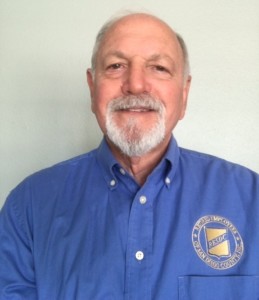
By John J. McTighe
Congratulations to Skip Murphy and Susan Mallett for their unanimous election to the Retired Representative and Alternate Retired Representative seats on the SDCERA Board of Retirement! In reality, they were the only candidates who filed the necessary paperwork with the County Registrar of Voters, so no election was necessary for those seats, according to state law. I’m very pleased they will be serving us for the next three years at the Board of Retirement. Skip has served on the SDCERA Board for many years, both as an active County employee during his tenure with the Sheriff’s Department, and since his retirement as the retiree elected member. Skip is a past member of the RESDC Board of Directors and currently serves as the President of the California Retired County Employees Association (CRCEA), the statewide association of the 20 county retiree associations similar to RESDC. He has done a great job in representing the interests of retired employees and I look forward to working with him over at least the next three years.
I’m excited that Susan Mallett decided to put her name in for the Alternate Retiree position. She is very well qualified for that job. Although as the alternate she will not be able to vote on most issues that come before the retirement board, she will play a critical role in making sure that retirees are always represented at the table when Skip may not be able to attend meetings. Susan is no stranger to RESDC and our interests, having served for five years as President prior to the start of my term in December 2015. As RESDC President, Susan attended nearly every meeting of the Board of Retirement and closely followed all issues before the board. She testified on behalf of RESDC on a number of matters that came before SDCERA during that time.
I want to send out a great big THANK YOU to Jim Feeley who will be ending his time as Alternate Retiree Representative when Susan moves into that positon. Jim, who had served on the Board of Retirement as an active employee from March 1982 to June 1992, was elected to serve as the alternate retiree member from July 1996 until the present. Jim had also served a brief time as a RESDC Board member and Second Vice-President prior to his election to the Alternate Retiree seat on the SDCERA Board. Jim has been very diligent in keeping himself up to date on retirement issues. I wish him well in his “retirement” from the Board of Retirement.
In late March, Congress voted to rescind Department of Labor (DOL) regulations that had been promulgated near the end of the Obama Administration that provided a key protection to employers whose employees participated in private defined contribution (DC) plans run by state or local governments. While on the surface this may seem like an issue we as retired public employee
participating in a defined benefit (DB) plan would have no interest in, it does cause me some concern. You may recall that the RESDC Board of Directors has supported the State of California Secure Choice Plan which would have established a statewide 401(k)-style defined contribution plan for private sector employees. Our Board took that position because we are very concerned by all the studies and surveys showing most Americans have not set aside adequate funds to prepare for their retirement.
The long-term consequence is that more and more people are going to wind up in poverty in their so-called “golden years,” relying on government safety net programs because they or their employers were not planning ahead for their retirement. In the short-term, this lack of retirement savings may also lead some people to feel what’s been termed “pension envy.” This is the mindset that “If I don’t have anything set aside for retirement, no one else deserves to have a retirement pension.” Thinking like that fuels efforts by some activists to find ways (i.e. initiatives) to put limitations on, or eliminate, public pension plans.
As of the time I’m writing this (early April), state officials in Sacramento are trying to figure out if there is a way that the Secure Choice Plan can be restructured to go forward without the aforementioned DOL regulation in place. We will be closely monitoring this situation and I will update you on the outcome in a future column.
Recent Events
- In April, RESDC hosted a candidate forum with the candidates for the Retired Member Eighth seat and Alternate Retired Member seat, respectively. E.F. “Skip” Murphy and Susan Mallett were the only candidates who submitted for each position, therefore, there was not an election for those two seats. The forum provided a great opportunity for members to learn more about Susan and Skip’s perspective on their important role as Trustees. Click here for further details and photos.
- The National Public Pension Coalition released a new report titled Why Pensions Matter, a comprehensive examination of the origins and importance of public pensions. The report examines how public pensions have developed over time, as well as the ways in which pensions help to combat a growing retirement crisis throughout the United States. To access the report, visit www.protectpensions.org/news/.
COLAs and Consumer Price Indices
By Stan Coombs
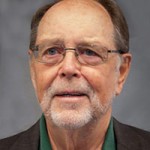 On February 9th, the San Diego County Board of Retirement quietly raised all county pensions again.
On February 9th, the San Diego County Board of Retirement quietly raised all county pensions again.
The Board’s actuary, Segal Consulting, reported that the applicable Consumer Price Index (CPI) rose 1.97% over the previous year, which meant a 2% Cost of Living Adjustment (COLA) was due county retirees, under the governing California County Employees Retirement Act of 1937. Actual COLA increases varied up to a 2% or 3% maximum, for tiered retirees who had excess CPI value remaining in their COLA banks. The increases would be effective in April.
That’s old news, and County retirees should have received this good, old news from RESDC and SDCERA news sources by now.
We’ve discussed retirement COLAs before. They’re vitally important. The National Institute on Retirement Security reports un-indemnified, 3% annual inflation reduces the purchasing power of a 62-year-old’s $2,000 monthly pension by more than 50% over their 23-year average projected lifetime.
The largest automatic COLA program – COLAs automatically triggered by inflation or other eventualities of employment – is undoubtedly Social Security’s, started in 1975 to ensure the purchasing power of Social Security and Supplemental Security Income benefits is not eroded by inflation. It affects more than 68 million beneficiaries. Social Security COLAs have ranged from 0% to 14.3%, and averaged 3.8%.
What we haven’t discussed before are the CPIs underlying these important COLAs. Five types are mentioned by the U.S. Bureau of Labor Statistics, which surveys average monthly prices of 211 consumable items, within 38 urban areas, totaling over 8,000 measurements of inflation.
According to the Bureau, prices for items in this “market basket” are weighted according to their relative importance, which, in turn, is judged by the proportion of total expenditures in each category; housing, transportation, food and beverages, medical, recreation, education and communication, apparel and other goods and services.
The Bureau’s “CPI For All Urban Consumers” (CPI-U) reflects the buying habits of about 80% of the non-institutional population of all urban households within U.S. Metropolitan Statistical Areas and other urban places of 2,500 inhabitants. The separate, “CPI For Urban Wage Earners and Clerical Workers” (CPI-W) excludes professional, managerial, technical, self-employed, temporary, unemployed and retired persons, and those not in the labor force. It includes about 32% of those in the CPI-U.
It’s sometimes criticized that the Bureau’s “Core CPI” omits food and energy, both of which can weigh heavily on consumer budgets. The Bureau’s argument is that food and energy prices are subject to large variations, often due to temporary supply disruptions that don’t represent relative price changes. In January 2012, the Fed stopped using the Core CPI.
An almost puzzling aside, from the standpoint of financially challenged consumers, at least, is the “Chained Consumer Price Index for All Urban Consumers” (Chained CPI), first calculated in August 2002. According to 2013 congressional testimony by Jeffery Kling, of the Congressional Budget Office, “the traditional CPI overstates increases in the cost of living. . . because consumers generally adjust their spending patterns as some prices change relative to other prices.” Thus, he indicated, people lessen the inflationary impact by purchasing fewer goods, goods and services that have not risen in price, or have risen less.
It’s apparently not considered “erosion of the standard of living” to switch to a meatless diet, or even dog food instead of hamburger, “because,” opined Kling, “the decline is usually smaller than it would be if substitutions were impossible.” Enter the Chained CPI, which adjusts for such forced shopping changes by obtaining cost estimates from two comparable months “chained together,” reducing the inflation calculation. The Chained CPI grows an average of .25% to .3% per year less than the traditional CPI, we’re told, which means $214 to $250 less in monthly purchasing power, after 23 years, for our 62-year-old retiree with the $2,000 pension.
But, the Chained CPI is attractive to budget hawks. Kling claimed big savings, allowing that federal spending would fall $216 billion over ten years and federal revenues increase $124 billion, due to its effect on Social Security and other federal programs, and on tax code income thresholds. Although considered by Congress, the Chained CPI has not been approved for federal COLA calculations as yet.
Since 1982, an experimental “CPI For The Elderly” (CPI-E) has also been calculated. Proponents pointed to soaring medical costs and the frequency of medical care for post 61 year-olds, who, unsurprisingly, consume double the medical care of all consumers in the other indices. After 20 years, this CPI-E rose an average 3.1% compared with average increases of 2.9% for the other indices. The CPI-E remains experimental.
San Diego County retirement system net assets increased $158.5 million during February, bringing fiscal-year-to-date changes to $711.5 million and total net assets to $11 billion, reflecting a point in time. Retirement funds regularly cycle up and down with investment market cycles, and public retirement systems are long-term organizations with time to address those variations.
RESDC Board of Director Position Opening
By Mark Nanzer, Executive Director
 A mid-term Board of Directors position has become available. The term of this position began in January 2017 and runs through December 2018. We are seeking prospective nominees who can devote their time voluntarily to the Association’s business, attend monthly Board meetings, and be at six General Membership meetings a year.
A mid-term Board of Directors position has become available. The term of this position began in January 2017 and runs through December 2018. We are seeking prospective nominees who can devote their time voluntarily to the Association’s business, attend monthly Board meetings, and be at six General Membership meetings a year.
Candidates for this position must submit their names in nomination by May 31, 2017.
Events that impact County retirees require active participation by retirees. We invite new individuals from our membership to contribute their talents for the benefit of the group so that our Association can be stronger and more productive in the years to come.
A term as a Director is a great introduction to the activities of the Board, and could later lead into a position as an Officer.
If you are interested in being considered, please state your candidacy for the RESDC Director position and submit a summary (limited to 200 words) about your background and work experience to our office on or before May 31, 2017 to:
RESDC
8825 Aero Drive, Suite 205
San Diego, CA 92123
If you have any questions, please contact our office by phone at (866) 688-9229 or e-mail at resdc@resdc.net.
RESDC Board Secretary
In April, Joan Wright resigned from her position as Secretary on the RESDC Board of Directors. We are very grateful for her years of service on the board, and wish her all the best.
At the April 18th General Membership Meeting, the members nominated and unanimously approved current board member Carlos Gonzalez to serve out the remainder of Joan Wright’s term as Secretary.
This news occurred after the print deadline for the May NETWORK, and will therefore appear in the print version of the June NETWORK.
Unique Neighborhoods of San Diego
By Nellie Parks, Director
 Recently I went on the “Unique Neighborhoods of San Diego” bus trip offered by the Oasis Healthy Aging Organization. The tour was narrated by local author and historian, Alan Mindell. What a beautiful, sunny day to view beautiful homes and listen to Alan speak of interesting facts about the surrounding areas of San Diego.
Recently I went on the “Unique Neighborhoods of San Diego” bus trip offered by the Oasis Healthy Aging Organization. The tour was narrated by local author and historian, Alan Mindell. What a beautiful, sunny day to view beautiful homes and listen to Alan speak of interesting facts about the surrounding areas of San Diego.
Dominated by canyons, Kensington is a cool and charming community with Spanish Style and Adobe homes. The Talmadge area has circular streets that curve to the canyon. Alan noted that canyons determine the configuration of neighborhoods in San Diego. Exiting off Carmel Valley Rd., we visited Del Mar Terrace, formerly a beach area, now a place of ultra-modern mansions. Traveling uphill, I noted individually styled homes, each with a deck to take advantage of the ocean view. This is my number one place to return and visit. Our tour took us past the famous Black’s Beach, Scripps Inn La Jolla, and the Torrey Pines Hotel.
We visited Mission Hills where we saw the oldest nursey in San Diego, the Spruce Walking Bridge that connects two neighborhoods, and Coronado where Hotel Del Coronado is located. When the Hotel Del opened in 1888, it became the largest wooden structure in the United States and it was the first hotel to utilize electrical lighting. It was nice to have lunch at the Coronado Ferry Landing. I wish I could write about every wonderful sight that was seen – if you get the opportunity, take the tour, I think you will enjoy it!
Founded in 1982, Oasis is a non-profit educational organization that is active in more than 50 cities and reaches more than 50,000 individuals each year. Oasis is a unique educational program for adults 50+ who want to continue to learn and be productive during the best years of their lives. To learn more about Oasis San Diego go to www.oasisnet.org/San-Diego-CA.
 Grossmont Location:
Grossmont Location:
Grossmont Shopping Center
5500 Grossmont Center Dr., Suite 269
La Mesa, CA 91941
(619) 881-6262
Escondido Location:
210 E. Park Ave., Room 6
Escondido, CA 92025
(760) 796-6020
Get to Know Your Representatives on the Board of Retirement
E.F. “Skip” Murphy and Susan Mallett were the only candidates who submitted for the Retired Member Eighth seat and Alternate Retired Member seat, respectively, consequently, there will not be an election for those two seats.
E.F. “Skip” Murphy
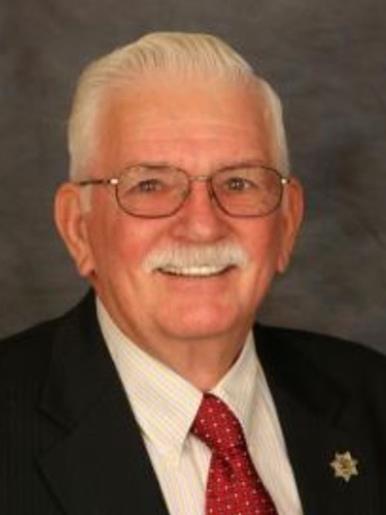 I bring forward the following qualifications that will provide you, the County retiree, with an active representative:
I bring forward the following qualifications that will provide you, the County retiree, with an active representative:
First, I served 38 years as a County employee (Sheriff’s Department).
Second, I have 20 years past service on the Retirement Board as an active employee—including nine terms as Chairman of the Board of Retirement. I continue active monitoring of the Retirement System after retirement. I also have six years service on the Retirement Board as a retired employee—including Vice-Chair and three-term Chairman of the Board of Retirement. I was Chairman working through the transition to a new CEO and CIO for the system.
Third, I have maintained active involvement in the issues impacting County retirees, including first-hand knowledge of on-going legislative and political pension issues and I continue participation in groups and activities looking out for the betterment of retirees.
Finally, and most important, is my continuing desire to protect the funding and integrity of the Retirement System itself; ensuring its solvency and strength in order to continue to maintain the promise of its design—to provide adequate pension benefits to career employees who have served the County of San Diego.
I am committed to being an active participant on the Board, looking out for all members.
I am committed to reviewing all investment potentials to ensure quality and diversification.
I am committed to work on behalf of the Retirement System to keep it out of the politics that can harm a public body.
I am committed to protect our members’ future.
I have shown that I have: Proven Experience—Proven Dedication—Proven Commitment.
Susan Mallett
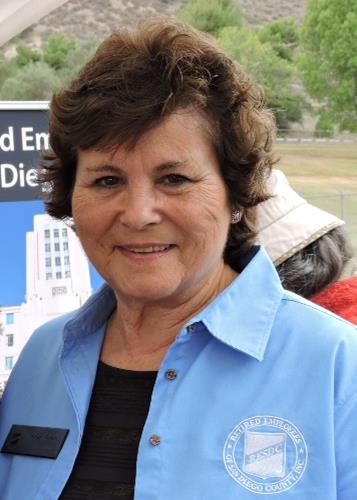 Many of you know me through my volunteer service on the Board of the Retired Employees of San Diego County, Inc. (RESDC).
Many of you know me through my volunteer service on the Board of the Retired Employees of San Diego County, Inc. (RESDC).
I retired in November 2006, after 24 years of service with the San Diego County Probation Department. I am a proud alumna of San Diego State University having earned Bachelor and Masters Degrees in Psychology and Counseling. My career with the County of San Diego began at Kearny Mesa Juvenile Hall. Through opportunities to promote and transfer throughout the department’s divisions, I gained invaluable experiences in personnel management and ethics, labor relations, budgeting, as well as administration. At the time of my retirement, I was the Deputy Chief of Juvenile Institutions and responsible for approximately one third of the Probation Department’s employees.
As a new retiree, I was encouraged to join the retiree association, RESDC, and did so without knowing much about our San Diego County retirement system or how it’s funded. Since 2009, I served on the RESDC Board as a Director and as President for over five years. In that capacity, I attended most Board of Retirement meetings, speaking before that Board on issues related to retiree benefits and interests, and regularly reporting on Board meeting discussions and decisions in the monthly RESDC newsletter. As an active observer of Board of Retirement meetings, I began to learn about our retirement system’s investments and strategies to balance investment risks with investment earnings. I understand our Board of Retirement has a number of responsibilities for the retirement system, with the primary responsibility to prudently manage the benefits and investments of the retirement fund for the members, active and retired, and their beneficiaries.
I hope you agree that my tenure on the RESDC Board, the recognized retiree organization representing the interests of San Diego County retirees, has prepared me to now serve as the Alternate Retired Member of our Board of Retirement.
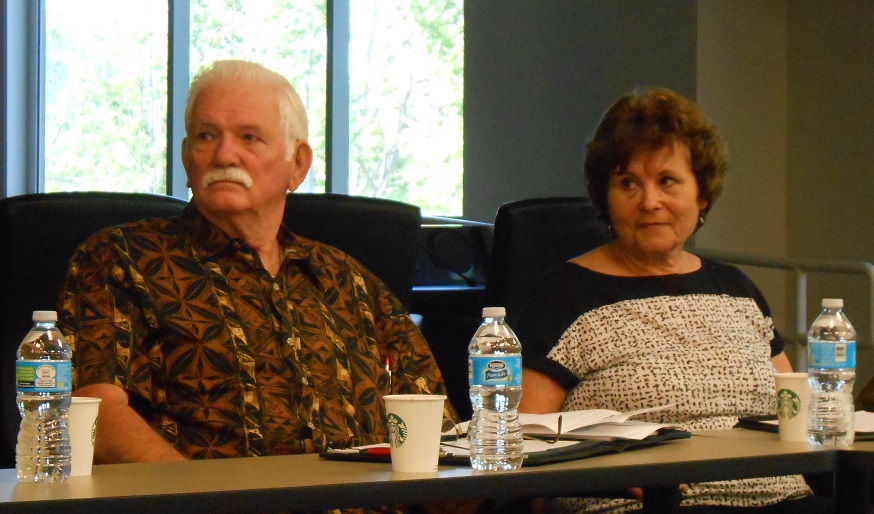
On April 11, RESDC hosted a Candidate Forum with E.F. “Skip” Murphy and Susan Mallett, the two candidates for the Retired Member Eighth seat and Alternate Retired Member seat, respectively.
Pension Facts
Report Says Fully Funded Public Pensions Would Waste Resources
Pension Facts at a Glance
San Diego County
One of the 4 U.S. counties with populations over 2 million with Triple AAA credit rating. One of 2 counties in California.
By Chris Heiserman, Director
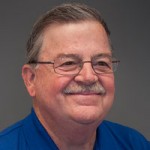 A policy brief published in February by the Haas Institute at UC Berkeley challenges the common perception that public pension systems at significantly less than 100% funding represent a serious fiscal problem for governments and taxpayers. The author of the analysis, Tom Sgouros, says accounting standards that treat public retirement plans like those in the private sector can be misleading, even counterproductive.
A policy brief published in February by the Haas Institute at UC Berkeley challenges the common perception that public pension systems at significantly less than 100% funding represent a serious fiscal problem for governments and taxpayers. The author of the analysis, Tom Sgouros, says accounting standards that treat public retirement plans like those in the private sector can be misleading, even counterproductive.
I know this doesn’t sound logical, but the 36-page report is very well referenced and argues that the practical goal of full funding for private sector pensions is not all that useful when it comes to government retirement plans. The financial reporting guidelines from the Governmental Accounting Standards Board (GASB), the accounting standards-setter for state and local governments, ask how much money a pension plan will need to cover all its liabilities now. This calculation is extremely important for a business retirement fund because the employer could go under tomorrow and workers deserve to receive the benefits they earned; however, a city, county or state will never stop functioning. These public employers can plan responsibly to fund pension benefits over a long-time horizon without stockpiling huge cash reserves to cover liabilities not due for many years.
This unusual analysis comes at a time when new GASB guidelines for annual financial statements filed by public pension plans include a new line item highlighting their long-term unfunded liability. Traditionally, the unfunded portion of future retirement system benefits has appeared in footnotes to required financial reports. Now this calculation will be front and center and may make it seem that a government is financially weaker than it was previously, even though the fiscal reality of the government’s situation will not have changed at all.
Undoubtedly the current funding level of most public pension plans could be improved, and there are a few pension systems around the country that are in dire straits and possibly facing collapse. However, most public retirement funds continue to meet their benefit obligations and are not in serious trouble. The author of this brief says it amounts to a disservice to the workers contributing to those plans regularly throughout their public service careers to claim they are.
Full funding of a pension plan amounts to covering the total future benefits of all current workers. In the case of public pensions, the report describes this approach as a waste of money because it equates to insuring against a city or county’s disappearance. According to the report, the real question of a pension plan’s fiscal viability is whether it can continue to pay its debts when they are due in perpetuity. As long as the retirement system continues receiving its three main sources of income – regular contributions from the employer and employees, and investment earnings – it should reasonably be expected to cover retiree benefits over time despite cyclical volatility in financial markets. This is why some fiscal credit rating agencies generally describe a 70-80% funded ratio as adequate for public pension systems.
Two other salient points made in this policy brief are:
“Full funding is a valuable goal, but so is reducing poverty, keeping roads paved, educating children, fighting crime, and so on. Few government goals can be considered to trump all others, and diversion of taxes into pension savings is a choice not to fund something else”; and,
“…it is virtually a law of nature that an overfunded pension plan—or any plan over, say, 90% funded—will see retiree benefits increase or budgeted contributions decrease. In the context of full funding, these changes will have little or no current cost…”
In other words, as retirement plans approach 100% funding, the political pressure to increase benefits and reduce contributions becomes overpowering for labor unions and decision makers. One example cited in the report is a historical reference to the giant California State Teachers Retirement System (CalSTRS). According to the author, CalSTRS was fully funded in 1998. He said the state reduced payments into the system and increased benefits just before the tech bubble burst in 2000-2001 and investment earnings plummeted. Nearly 20 years later CalSTRS has a $73 billion unfunded liability and a 68% funded ratio.
Still, it’s informative to note that despite absorbing this huge financial hit, the teachers’ pension fund is distributing benefits to hundreds of thousands of retirees every month and is programmed through state legislation enacted in 2014 to achieve full funding by 2046.
The author of this report, “Funding Public Pensions: Is full funding a misguided goal?”, claims that public employee pension plans get more blame than they should in scenarios of fiscal stress where the march toward 100% pension funding results in budget cuts for critical services like education, roads or law enforcement – or increased taxes. He says accounting rules applied to public pensions exaggerate the need for higher levels of funding.
The report traces the history of governmental accounting rules in general and discusses problems associated with applying them to public retirement plans. It describes and critiques some of the pension “reform” ideas often put forth as austerity measures to save money; for example, creating lower tiers for employees who will receive reduced benefits, closing a defined benefit plan, and shifting workers to a lower cost defined contribution plan. The policy brief is very informative and comprehensive and I plan to share further insights from it in future NETWORK articles.
The full report can be found here:
http://haasinstitute.berkeley.edu/sites/default/files/funding_public_pensions_-_publish.pdf
San Diego County Credit Union

Summer is right around the corner and it’s not too late to start saving for your next vacation. San Diego County Credit Union’s products and services make saving easier than ever. It could be as simple as setting up a new savings account, using our 30,000 surcharge-FREE CO-OP ATMs, refinancing to a lower interest rate or saving money on postage by paying your bills online.
Visit www.sdccu.com, call (877) 732-2848, or come into any of our convenient branch locations.
New Kaiser Permanente San Diego Medical Center
 Kaiser Permanente’s new Medical Center opened on April 25th. Kaiser states, “We’re reimagining care in Southern California with the new San Diego Medical Center. From small details that enhance comfort to technology that makes care more effective, this state of-the-art facility will offer new ways to help keep you happy and healthy.”
Kaiser Permanente’s new Medical Center opened on April 25th. Kaiser states, “We’re reimagining care in Southern California with the new San Diego Medical Center. From small details that enhance comfort to technology that makes care more effective, this state of-the-art facility will offer new ways to help keep you happy and healthy.”
The San Diego Medical Center features several new technologies to support patients’ health and wellness, including:
- Interactive single-patient rooms with 75-inch monitors, on-demand education and entertainment, and room controls
- Virtual fall prevention, pain level monitoring, and caregiver alerts to help put the patient at the center of round-the-clock care
- Dynamic lighting system that mimics daylight for improved energy and sleep patterns
The Kaiser Permanente community hosted a Grand Opening celebration on April 8th for the new Medical Center, located in Kearny Mesa. Attendees enjoyed an afternoon of family fun and food.
Location: San Diego Medical Center
9455 Clairemont Mesa Blvd.
San Diego, CA 92123

 Save the Date
Save the Date
RESDC Day at the Padres Game!
Wednesday, August 2, 12:40 p.m.
RESDC members will attend a game at beautiful Petco Park on August 2nd as the Padres take on the visiting Minnesota Twins. Watch for more details about tickets in future issues of The NETWORK.
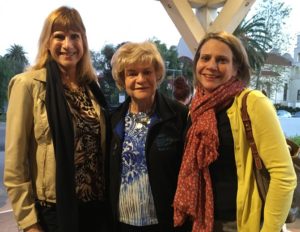
 RESDC Evening at the Theatre
RESDC Evening at the Theatre
Our first ever RESDC Evening at the Theatre event was a success! Members enjoyed the musical comedy On the 20th Century at Cygnet Theatre in Old Town.
Flag Day Luncheon 2017
Thursday, June 15, 11:00am
What: Lunch – $12.00 per person
When: Thursday, June 15, 2017, 11:00 a.m.
Where: La Mesa Community Center in MacArthur Park
4975 Memorial Dr., La Mesa, CA 91942
Parking Map | Google Maps
Entertainment By: Christian Youth Theater San Diego Performance Group
Menu: ham, roast turkey, salads, fruits, vegetables, desserts, coffee or tea
To Attend:
Option 1 – Pay with Check. Please print and complete the Reservation Form, include the names of person(s) attending, and send a check for $12 per person, payable to RESDC at 8825 Aero Dr., Suite 205, San Diego, CA 92123. Reservation forms must be received in the RESDC office by Friday, June 9.
Option 2 – Pay with Credit Card. Please go online to: https://www.resdc.net/events. Click the green “Register” button and follow the steps to register and pay. You will need to use the email address associated with your member account. Need assistance? Contact us at (619) 688-9229 or resdc@resdc.net. Online registration and payment must be received by Friday, June 9 at noon.
Tickets should be picked up at the registration table at the luncheon. They will not be mailed.
Parking is adjacent to the Community Center with overflow parking available in three other lots at the center. The closest overflow parking lot is the Cottage lot and it will be well marked.
The Flag Day Luncheon is an indoor event.
Welcome New Members
Leila Attar – Probation
Patricia A. Brewer – Health & Human Services
Judith A. Goldberg – Probation
Hazel Maloney
James O’Brien – Sheriff
Jo A. Tyrell – Public Defender
Christina Villegas – Superior Court
In Memoriam
Betty Adkins – Health & Human Services
Carol Albert – Surviving Spouse
Raul Alcantara – Health & Human Services
Constance Alexander – Sheriff
Anthony Amato – Surviving Spouse
Leroy Anderson – Public Works
Helen Baggett – Health & Human Services
Mary Baker – Municipal Court
Ada Barre – Health & Human Services
William Boggein* – Parks & Recreation
Patricia Bucklin – Surviving Spouse
Ralph Bulmer – Surviving Spouse
Grant Burns – Planning & Development
Betty Campbell – Board of Supervisors
Timothy Corrigan – District Attorney
Oscar Cota – Health & Human Services
John Demet – Public Works
Richard Fairchild – Probation
Bernice Gale – Health & Human Services
Glendel Galloway – Animal Services
Bernice Heiter – Surviving Spouse
Shirley Hillman – Superior Court
Regina Jenkins – General Services
Suzanne Klatt – Superior Court
Patricia Lamotte – Registrar of Voters
Edward Lucero – Health & Human Services
Mark Malamatos* – Medical Examiner
Robert Maxwell – Auditor & Controller
Leona Minga – Surviving Spouse
Linda Reed – Health & Human Services
Dorothy Romano – Surviving Spouse
Thomas Snowden – District Attorney
Electra Spang – Health & Human Services
H. Stevens – Superior Court
Elizabeth Stinson – Health & Human Services
Beverly Sulek – Surviving Spouse
Klass Terpstra – Public Works
Robert Vail – Probation
Duncan Werth II – Superior Court
Richard White – Health & Human Services
Douglas Wigle – Environmental Health
*Active
As long as we think of you,
You’ll always be with us.
The surviving spouse of a member is eligible for RESDC membership. For enrollment assistance, call (619) 688-9229.
Member Privacy
Any retiree or surviving spouse who does not want his/her death notice published in the “In Memoriam” section of this newsletter may notify the RESDC office and your privacy will be maintained.
NETWORK is the official monthly newsletter of the Retired Employees of San Diego County, Inc. (RESDC), a private non-profit organization.
The information printed in the NETWORK is believed to be from reliable sources. However, no responsibility is assumed by the NETWORK for inaccuracies contained herein.
Business and Inquiries: Business matters and address changes may be recorded on our voicemail at any time, call (866) 688-9229. Please spell your name so the correct member record can be located.
Retired Employees of San Diego County, Inc.
8825 Aero Drive, Suite 205 | San Diego, CA 92123
Office Hours: 9 a.m. to 2 p.m. Monday through Friday
TELEPHONE: (866) 688-9229 Toll Free
FAX: (619) 688-0766
E-MAIL: resdc@resdc.net



